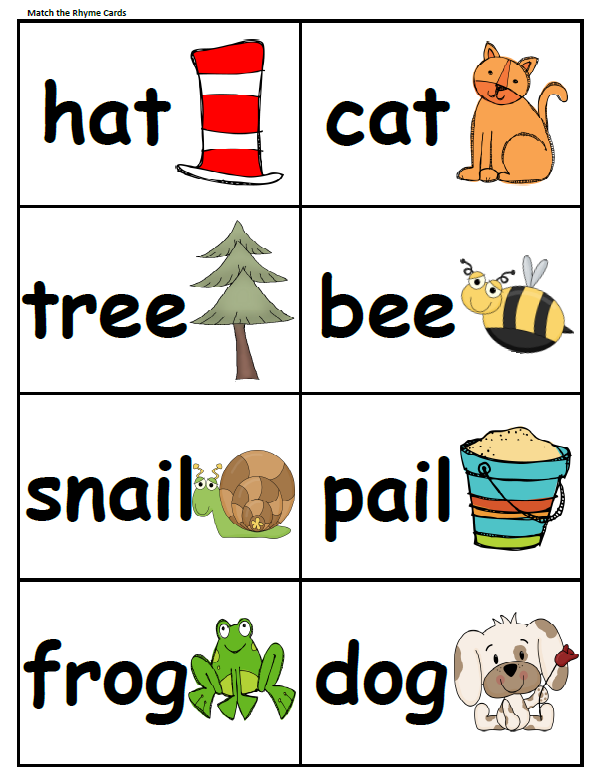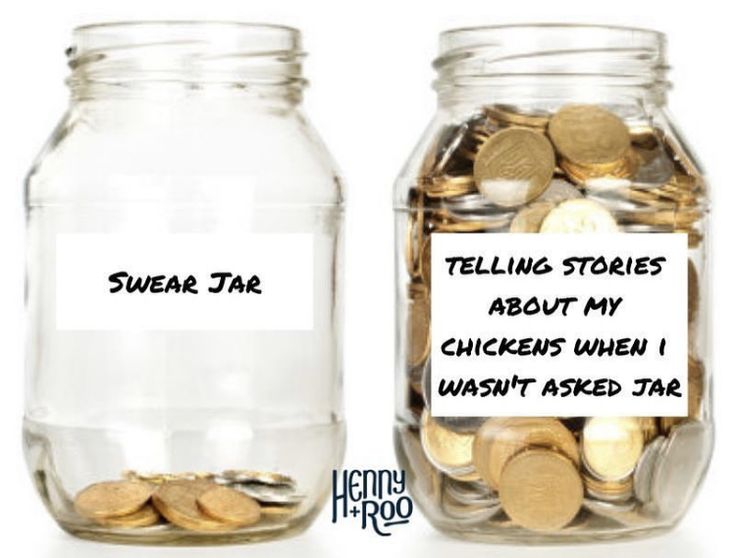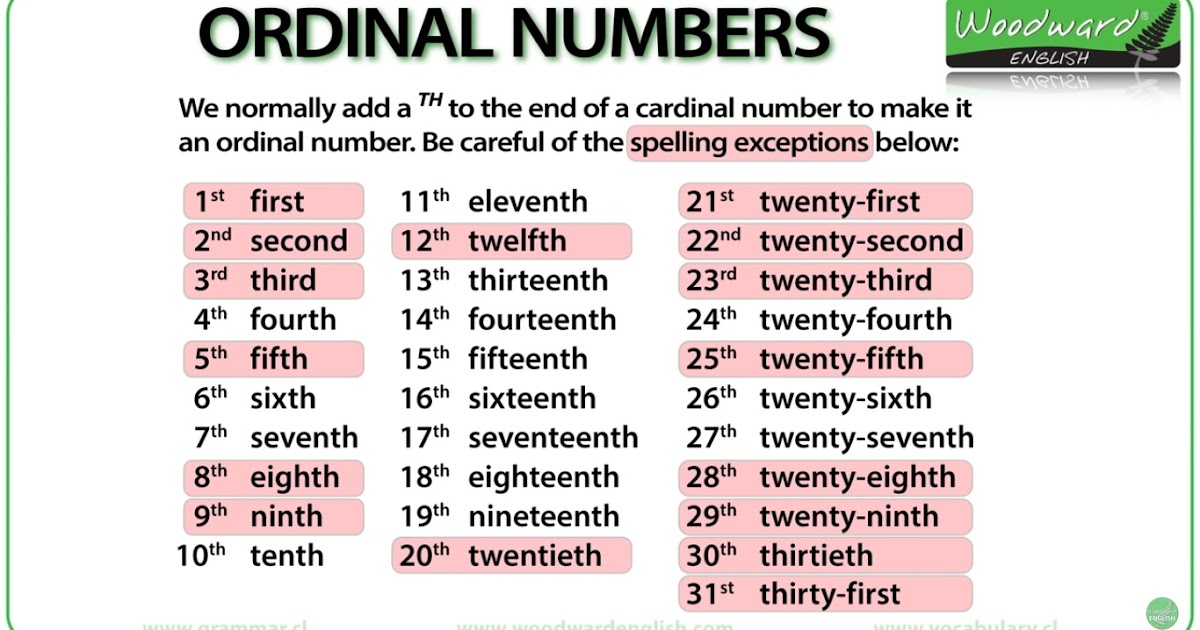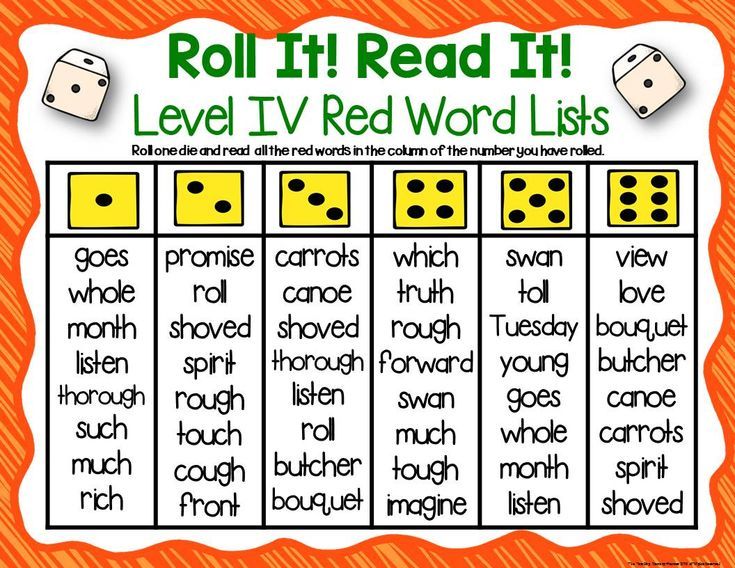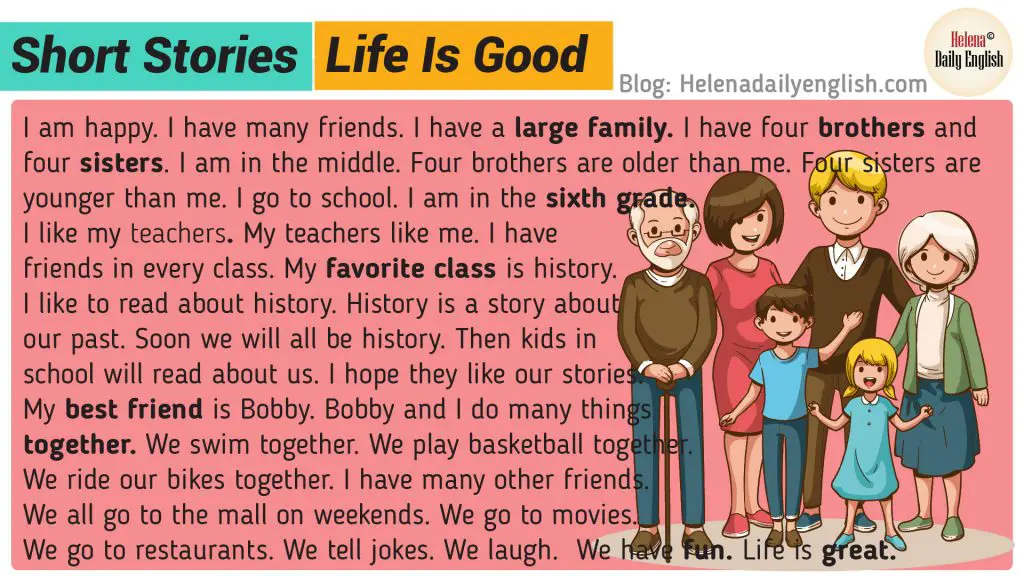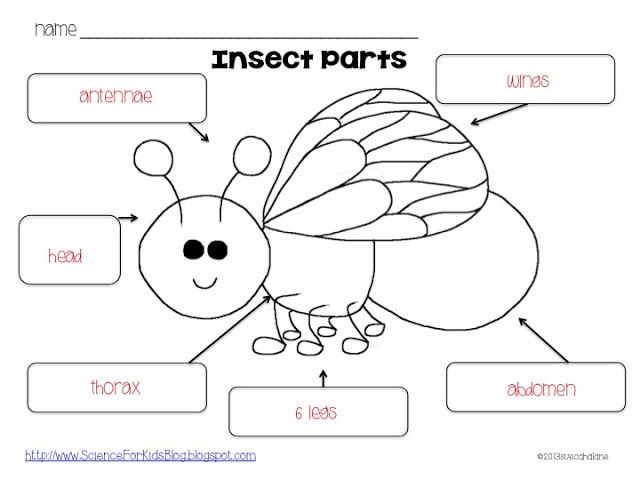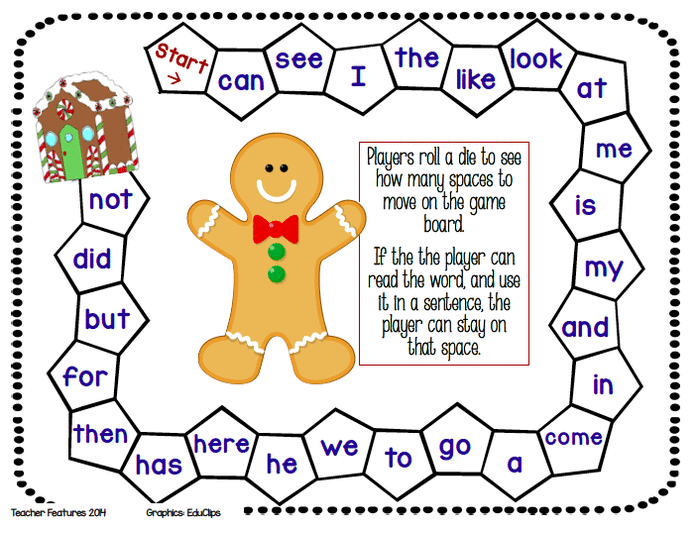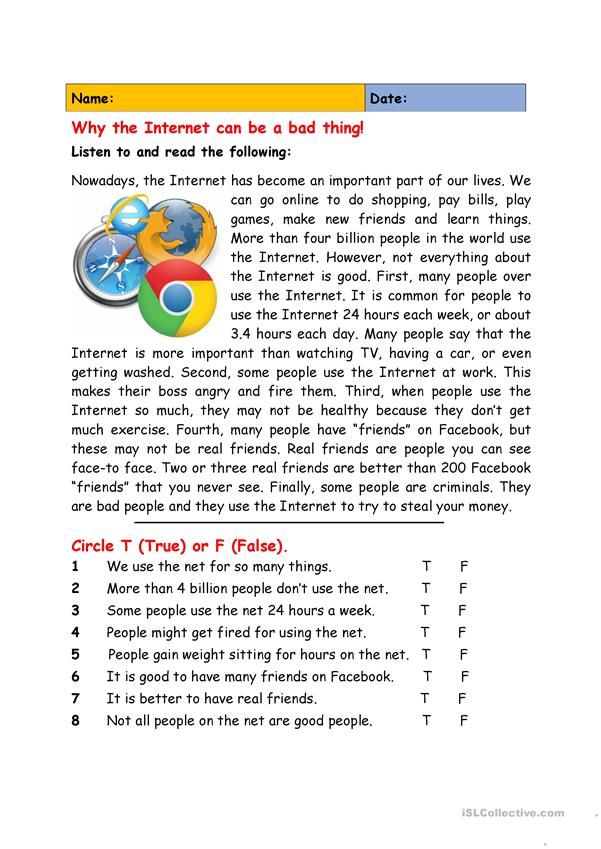Learn rhyme words
All About Rhyming Words For Kids, Plus Tips For Rhyming Practice
If you’re interested in some quick and fun ways to teach rhyming words for kids, you’re in the right place. And if you’re not sure how powerful rhyming can be, just think about the impact of Dr. Seuss’s books.
Why does Dr. Seuss continue to dominate children’s literature almost 30 years after his death? There are many reasons why Dr. Seuss’s books stand out from his peers’.
Besides the fact that they are incredibly fun to read, have great rhythm, and teach us all a thing or two about some of life’s lessons, his books are also easy to remember thanks to his use of rhyming.
Although rhymes seem like fun and games, they actually play an important role in language development.
In this article, we’ll explore everything you need to know about how to help your child develop this essential language skill.
Let’s start by defining what rhyming words are.
What Are Rhyming Words?
Rhyming words are words with the same ending sound. For example, “at” and “bat” are rhyming words. But so are “through” and “blue,” even though they end with different spelling patterns.
When working with rhyming words, it’s the sounds that count, not the letters. Take “approve” and “above,” for example. Both end in the letters /o/, /v/, and /e/. However, those three letters aren’t pronounced the same way in both words, so the words don’t rhyme.
Why Does Your Child Need To Learn How To Rhyme?
Before we explore the different ways to teach rhyming words for kids, it’s important to know why you may want to put in all this effort. Why should your child bother learning this skill?
Rhyming benefits children in plenty of ways. Let’s take a look at some right now.
1) Better Information Retention
One of the benefits of rhymes is that they help children (and adults) retain information more quickly and easily.
Children enjoy the feeling of reading deeply familiar stories, and doing so can even allow young readers to memorize parts of a book (or a whole book!).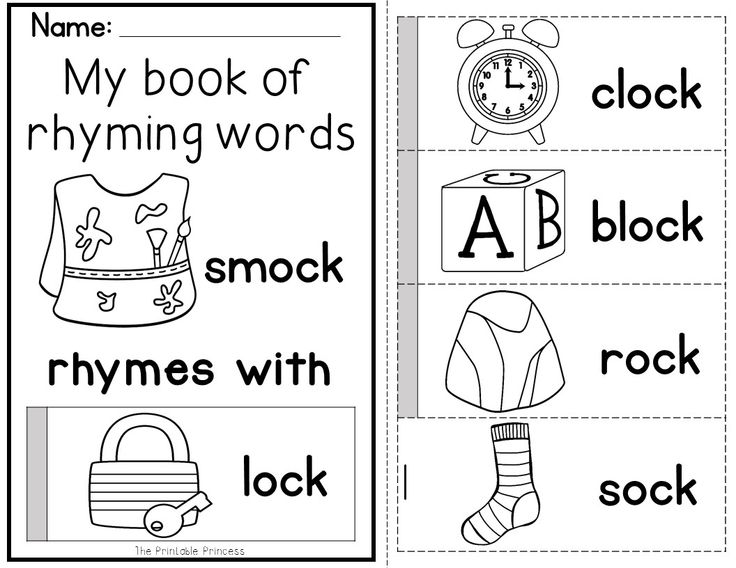
Since these books are full of rhyming words, they’re easier to remember. That’s because rhymes stick in your child’s brain more quickly than other types of spoken language.
As your child hears the words, their mind breaks them down into sounds and makes connections between them. This connection between the words makes them easier to recall in the future.
Because of the impact of rhyme, many adults can still recite poems or songs they learned way back in elementary school.
2) Reading And Writing Benefits
If your child learns how to spell the word “fun,” it’s much easier for them to spell “run” correctly. Rhyming helps them pick up on patterns and word families, which can benefit them as they learn to read and write.
Finding patterns in words can unlock the world of reading for your child. They’ll discover success reading children’s books written in rhyme, which can be a huge confidence booster!
And, as they continue reading, they’ll be able to take what they’ve learned and apply it to non-rhyming words.
3) Phonological Awareness Development
Phonological awareness helps children identify and isolate sounds in words.
For instance, a child with phonological awareness will understand that the “all” sound in “ball” is the same “all” sound in mall, tall, hall, wall, etc.
Rhyming is one of the activities that can help develop this skill.
4) Listening Skills
Kids hear rhymes before they can read them. So, when you play with rhymes together, you help your child learn to listen to the different sounds in a word.
Listening is an essential skill that kids need to practice. As you work with your child on rhyming, they’ll be learning to use their ears to collect all of the information they need.
5) A Fun Way To Play With Language
Learning shouldn’t be boring, especially if you want to capture and hold your child’s attention. So, how do you bring some fun into it?
Rhyming words for kids can be an exciting way to do just that! When rhyming, your child is likely to engage more and, in the process, continue wanting to learn about language.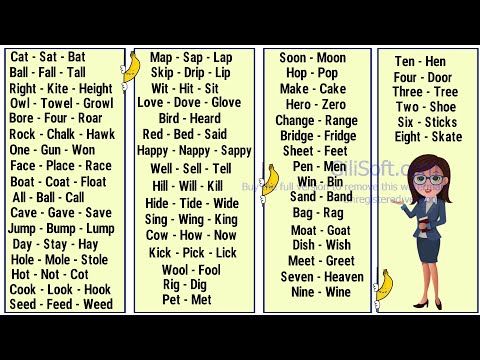
6) Cultural Literacy
Classic nursery rhymes and classic rhyming songs are a part of our culture.
The more your child is exposed to them, the more comfortable they’ll be when they come across other literature in the future with references to familiar rhymes like “Hickory Dickory Dock” or “The Itsy Bitsy Spider.”
The Three Stages Of Rhyming
Like most language development skills, rhyming takes time to develop. While you’re on this journey, your child will go through the following stages.
1) Hearing Rhymes
Naturally, the first stage of rhyming is repeatedly hearing rhymes. Your child can’t learn this skill if they aren’t exposed to rhymes.
This exposure can be through songs, nursery rhymes, and children’s books. It’s important to point out any rhyming words to your child as you come across them at this stage.
For very young children, chanting rhyming words while clapping or swinging their arms or bouncing rhythmically (blue/shoe…blue/shoe…blue/shoe) can activate rhyming and be fun to do.
2) Recognizing Rhymes
The more your child is exposed to rhyming words for kids through the songs or the books you read to them, the easier it will be for them to begin recognizing rhymes.
When your child starts pointing out which words rhyme in a song or book, they have reached the stage of rhyme recognition. During this phase, continue singing songs, sharing nursery rhymes, and reading rhyming books.
Once your child indicates that they’ve found a rhyming word, stop reading and let them show you. If they’re right, encourage them by saying, “Yes, those words end in the same sound; they rhyme.” Praise them for listening carefully and finding words that end in the same sound.
If your child makes a mistake, that’s OK! Gently correct them by saying, “I’ll repeat those two words. Listen carefully.” Then, say the two words aloud clearly. Finally, explain why the words don’t rhyme.
3) Creating Rhymes
So, you’ve been singing and reading to your child.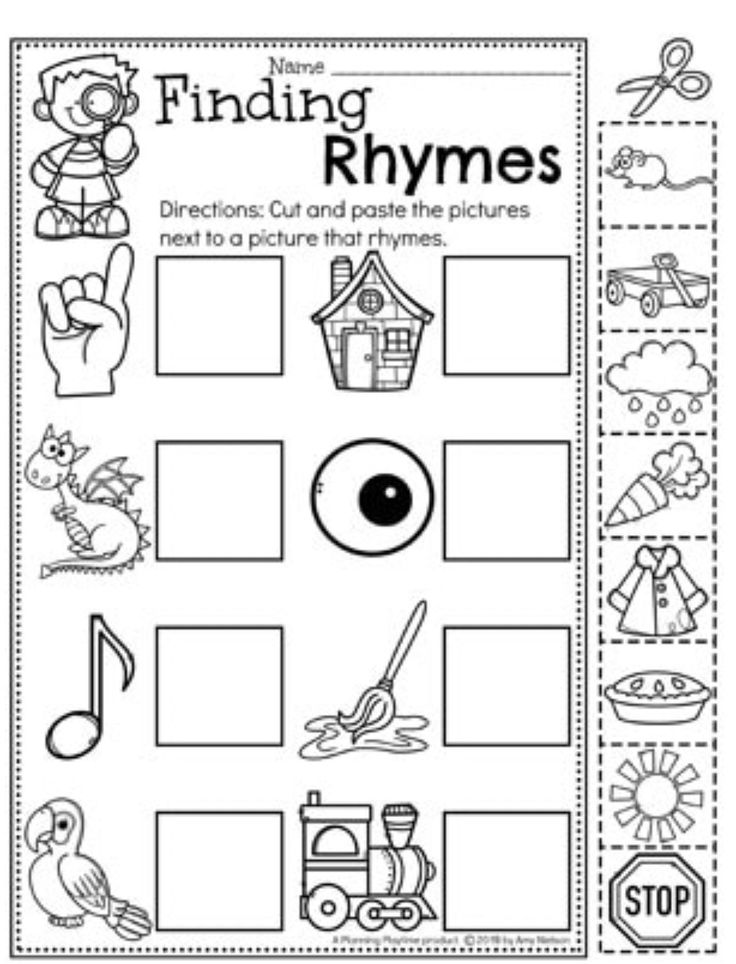 You’ve helped expose them to different rhymes, and they have also started to recognize them.
You’ve helped expose them to different rhymes, and they have also started to recognize them.
The next stage is your child creating their own rhymes!
Children love making up nonsense rhyming words (like pickle/smickle), and you might get to see your child’s creativity as they try to use their knowledge and understanding of rhymes to produce their own.
Don’t be surprised if they ask you questions like, “Do you know what rhymes with talk? Walk!” During this phase, your child might also show interest in writing their own books with rhyming words on the pages. Encourage them to let the creative juices flow!
The more your child practices, the better they’ll become at making their own rhymes using rhyming words.
Why Might A Child Have Trouble With Rhyming?
Some kids pick up rhyming quickly and easily. Others require a lot more repetition before they can recognize or create rhymes.
If your child is having some trouble, here are four common culprits.
1) They Haven’t Yet Developed Phonological Awareness
Phonological awareness is an umbrella term that includes the development of segmentation, rhyming, and blending syllables.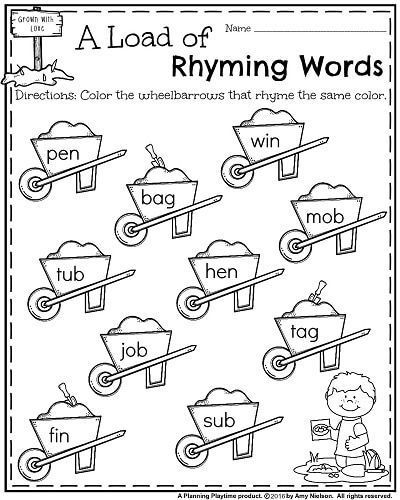
As we mentioned, some kids pick this important skill up easily, while others may need a little more practice to get the hang of it.
If you suspect that your child isn’t ready to rhyme, that’s OK! Slow down a bit, and read plenty of rhyming books together. Talk about the words and point out the sounds the letters make in them.
Using the HOMER Explore Letters Kit is another great way to practice. Build a word with the magnetic letters. Then, create another word that rhymes by swapping out the first letter. Encourage your child to make another word that rhymes with the first two.
As you help them gain confidence with the alphabet and the sounds letters make, you’ll equip your child with the skills they need to rhyme.
2) They Might Be Confused About Which Words Need To Rhyme
In some books, the words that rhyme are at the end of consecutive lines. But sometimes, alternating lines rhyme. And other times, the rhymes are at the beginning of a sentence, not the end.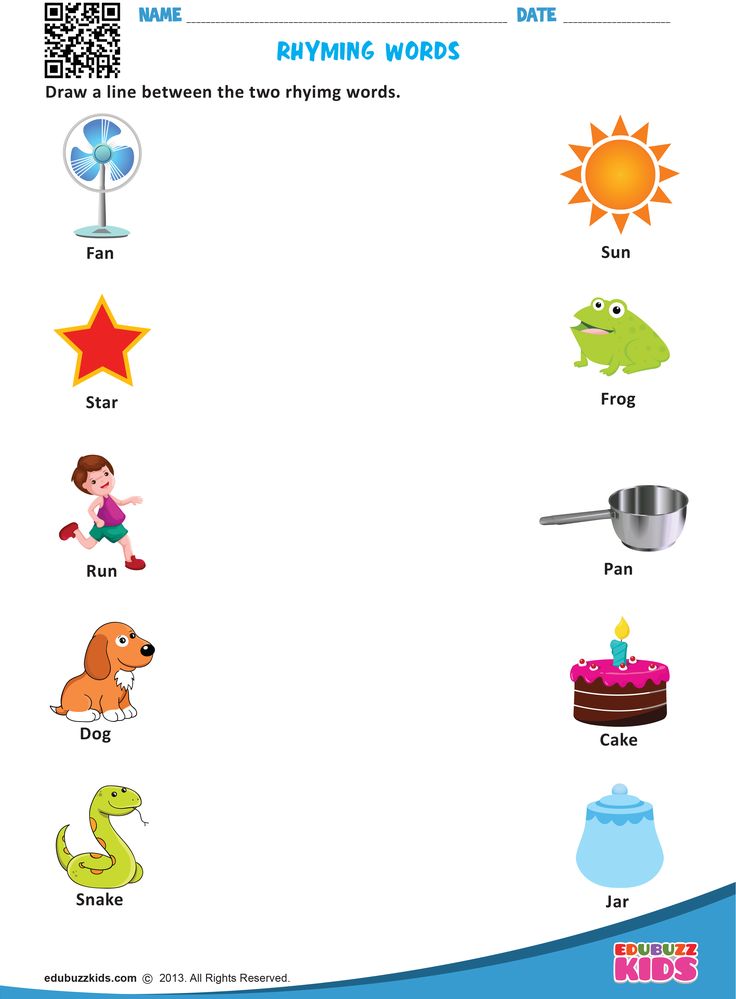
All of this inconsistency in rhyming patterns can be confusing to a child who is trying to learn this skill.
To practice, work together to find rhyming words and see where they are. This can teach your child to look for patterns in words, which can help them become a better reader.
3) They Might Have Trouble Focusing
For any child to learn rhyming words, they need to be able to focus on the activity so they can pick up on the different sounds and rhythmic patterns.
If your child quickly loses interest in the activity you’re doing together, they might not hear you when you highlight that “look” rhymes with “book.”
To help, make sure you’re working on age-appropriate skills. If your child is a young toddler, they might not be developmentally ready for rhyming. Wait a little longer, and then try again.
If your child is ready to rhyme and just loses focus, try a different type of activity. For example, play a rhyming game or read a book they enjoy.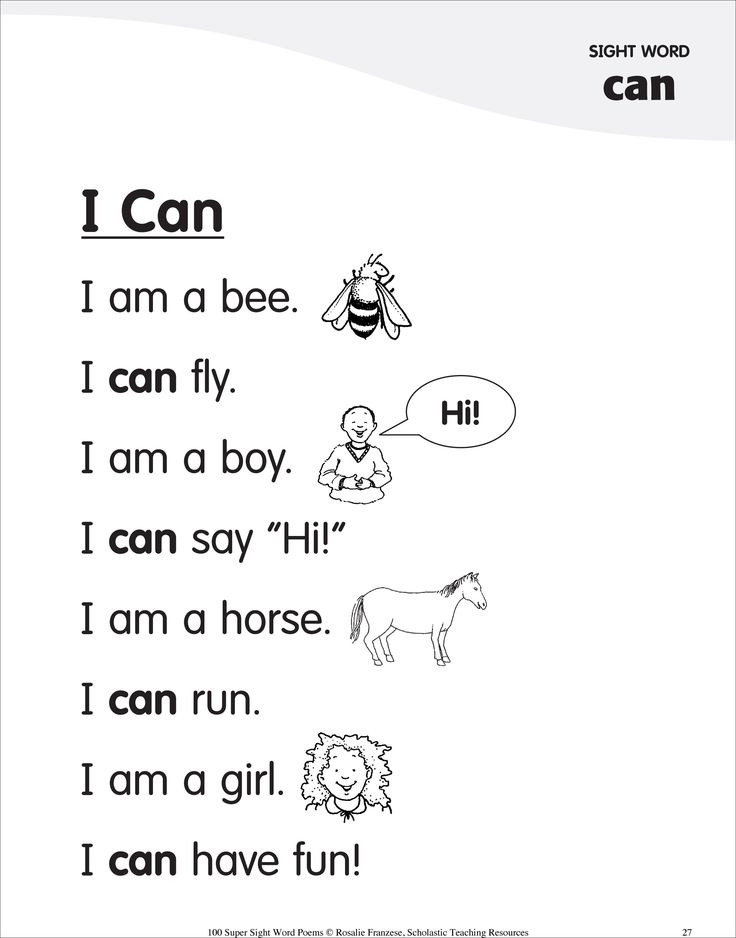 Again, doing something that interests them can help hold their attention.
Again, doing something that interests them can help hold their attention.
4) They Confuse Which Part Of The Words Are Supposed To Rhyme
Some kids may get mixed up because they think words that start with the same letter rhyme.
If your child says that moon and milk rhyme, they’re on the right path. They understand that part of the two words needs to match; they’re just confused about which part.
To help your child overcome this, start emphasizing the ends of the words when you point out rhyming words for kids. Instead of saying, “Pig and wig rhyme,” say, “p/IG and w/IG rhyme.”
This pulls the focus to the end of the word. It may take time, but keep practicing, and you’ll help your child master this skill!
Helping Your Child Develop Their Rhyming Skills
The above are some of the common reasons why your child may not have mastered rhyming just yet. But now that you understand the importance of rhyming, how can you help them acquire this skill?
These eight fun rhyming activities can help reinforce the concept for your child.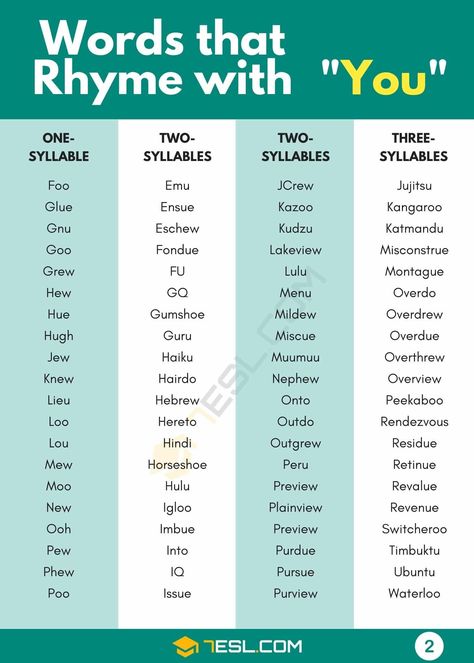
1) Recite Nursery Rhymes
Nursery rhymes are not just for babies! They can actually play an essential role in young children’s language development. That’s because they help kids hear the different syllables and sounds in language.
A fun activity to enhance learning during nursery rhymes is to play fill in the blank. Simply recite a nursery rhyme out loud and leave your child to fill in the last word.
For example, “Humpty Dumpty sat on a wall. Humpty Dumpty had a great…”
The proper ending is the word “fall.” If your child doesn’t get it at first, that’s OK. Repeat the sentence, adding the word they suggested to the end. Then, ask your child, “Does that sound right?”
If not, say it the correct way and point out that “wall” and “fall” rhyme.
It can also be fun for the adult to say what comes next and supply a completely wrong word. Your child will get a kick out of the silly answers you come up with!
2) Sing Songs That Rhyme
Many popular and age-appropriate songs also rhyme.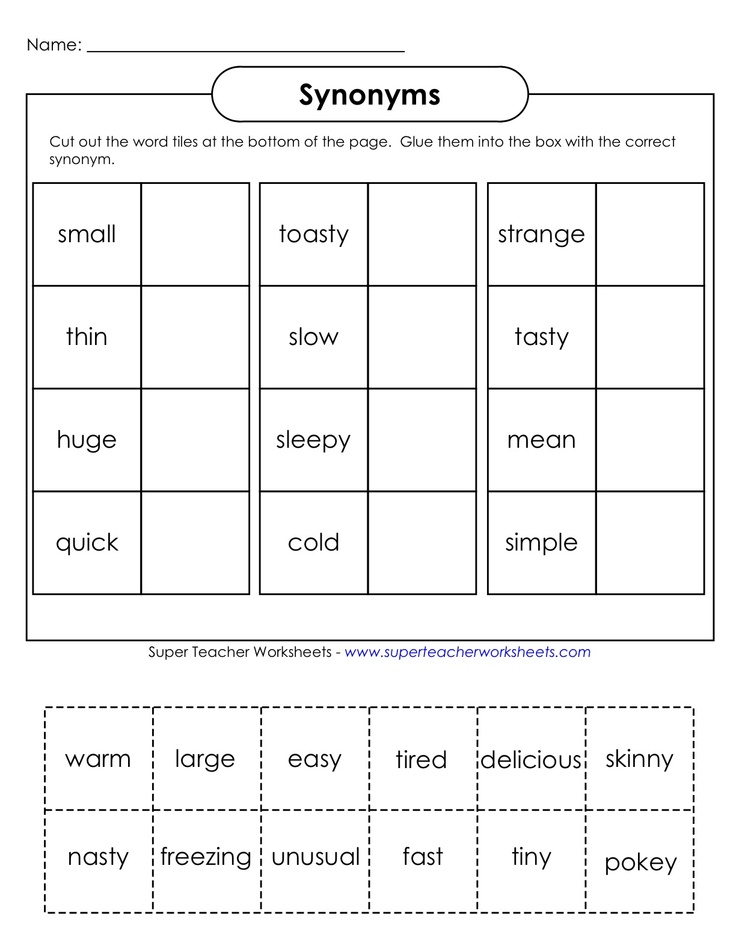 So, why not point out the rhymes when watching TV or listening to music?
So, why not point out the rhymes when watching TV or listening to music?
As we’ve mentioned, the more children are exposed to rhymes in different forms, the easier it will be for them to fully grasp the concept of rhyming. Noticing rhymes in your day-to-day activities is a great way to accomplish that!
There are so many fun, silly songs that rhyme. Here are a few of our favorites:
- Down By the Bay
- I Had a Little Turtle
- 5 Little Monkeys Swinging in a Tree
- On Top of Spaghetti
- If All of the Raindrops
- Do Your Ears Hang Low?
Pick one song at a time to work on, and sing it often — during car rides, while setting the table, or in the bath. This way, your child becomes familiar with the words and the tune.
Once they know the lyrics, pause where a rhyming word goes and ask them to say what comes next. Let them say it, and then keep singing.
When you have one song down, pick another to learn. Each time you sing a rhyming song, you’re helping your child master the skill of rhyming.
3) Read Poetry
Poems are a wonderful way to engage in rhyming words for kids. This is also an opportunity to expose your child to different and diverse literature.
For instance, Lucille Clifton, Nikki Grimes, and Nikki Giovanni are some poets who’ve written incredible poetry for kids.
There are also many children’s books written partially or totally in rhyme, such as the “Llama Llama” books. The idea here is to continue exposing your child to different forms of rhymes.
For a bit of fun, consider hosting a family poetry night. Let everyone pick a favorite poem to share. Then, spend a few weeks memorizing the words. On poetry night, take turns reciting your poems and listening to each other.
Alternatively, you can use this night to read several poems from different poets. That way, your child can hear a variety of poems and listen to the different ways each poet uses the English language.
You may even want to incorporate poetry into your bedtime reading routine, too!
4) Play Rhyming Word Games
There are plenty of ways to help your child learn to rhyme while still having fun!
For instance, you can use the letters in the HOMER Explore Letters Kit to spell out a word ending in -at.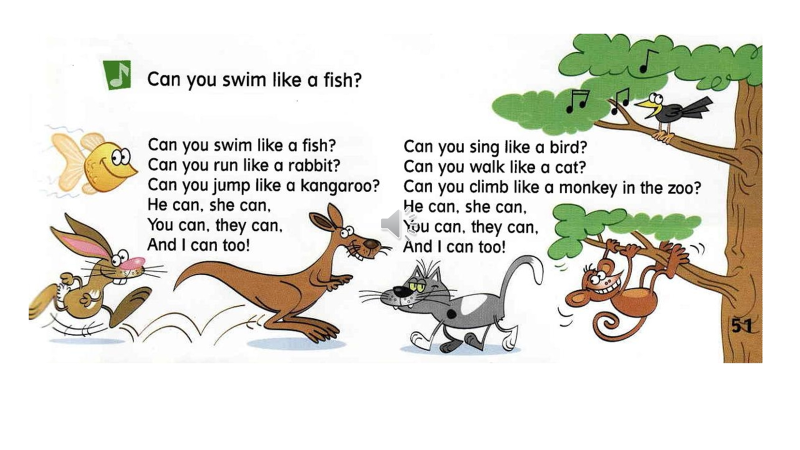 Put the letters “at” on the board.
Put the letters “at” on the board.
Your child now needs to place letters at the beginning to create words that rhyme (cat, hat, bat, mat, etc.). See how many they can come up with for a prize!
You can also play rhyming games when you’re out and about. Pick a word and say it aloud. Ask your child if they can think of a word that rhymes with it. Then, add your own word that rhymes.
Continue playing, alternating who speaks, until no one can think of another rhyming word. Have your child pick a new word and begin again!
5) Rhyme With Pictures
Images can help summarize chunks of information into smaller and easier to process content. You can take advantage of this by using picture books.
Pictures of a hat, cat, or mat may not expose learners to how these words are written, but it allows them to start learning the basic concept that rhyming words sound similar.
You can also create custom picture cards with a pack of index cards. Draw a simple, easily recognizable object on each card.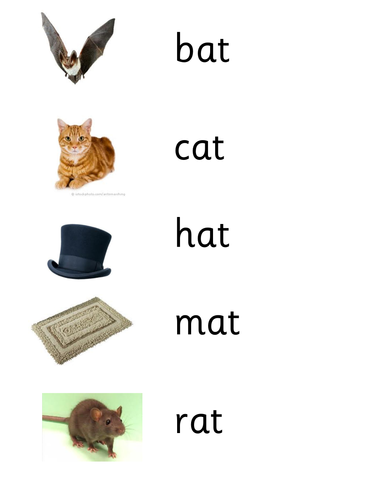 Here are some words to use for your pictures:
Here are some words to use for your pictures:
- Moon
- Spoon
- Bear
- Chair
- Cat
- Hat
- Ring
- Swing
- Dog
- Log
Once you have your cards made, you can use them in various ways. For example, you might spread them out upside down and play Memory with your child. Take turns flipping two cards at a time. Say the two words aloud. If they rhyme, keep them. If not, flip them back over.
You can also hide one word from each matching pair around the room. Hand your child one of the other ones and say, “Can you find a card with a picture of something that rhymes with ‘ring?’” Then let them search around the room to find the right card.
6) Act It Out
Instead of just reading or singing a rhyme, acting it out can help a child not only remember the rhymes but also have fun in the process!
Whether you’re acting it out, singing, reading, or using picture books, the more you expose your child to rhymes, the quicker they’ll grasp the concept.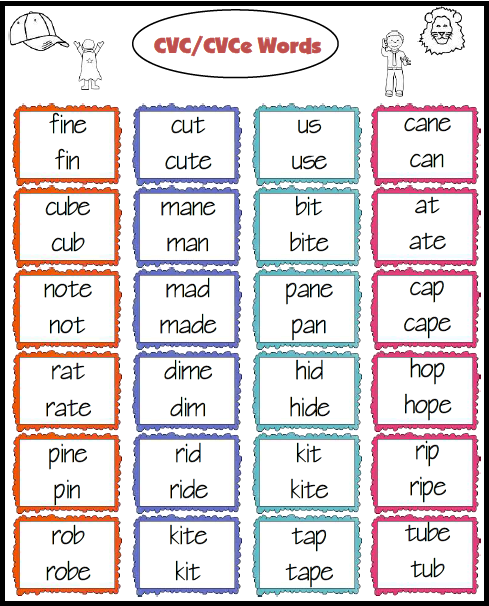
7) Rhyme Nonsense Words
Nonsense words are words that aren’t actual words. For example, the word “thirp” is a nonsense word.
Teachers often use nonsense words to help students learn specific skills, including the developing the power of the hour: rhyming.
Say a nonsense word and ask your child to think of a real word that rhymes. Here are a few words you can try:
- Vlat
- Trun
- Splew
- Ploon
To make it even more fun, pretend to be a robot or an alien. Then, ask your child to help you translate your language into English by coming up with a rhyming word.
8) Make A Rhyming Basket
Look around your house for items that rhyme, and put them in a large basket or box for your child to use. They can sort objects, create a story with the rhyming words, draw them, or use their imagination to interact with the rhyming words in a new way.
Here are a few ideas of common objects that rhyme:
- Sock, block
- Pan, can
- Jar, car (a toy one, of course!)
Have your child brainstorm more items that rhyme to put in the basket. Since these things will get played with, make sure the items are kid-friendly and safe.
Books With Rhyming Words For Kids
We’ve already mentioned a few authors who have created some incredible children’s books that rhyme. Here are a few other popular options that your little one can also enjoy:
- There’s A Wocket In My Pocket!
- Here’s A Little Poem
- Llama Llama Red Pajama
- Madeline
- Rhyme Crime
- Baby Boo, I Love You
- I See The Moon: Rhymes For Bedtime
- Giggly Wiggly: Playtime Rhymes
It’s Time To Rhyme With Rhyming Words For Kids!
Rhyming words for kids are a fun and creative way to lay a solid foundation for literacy.
So, remember to continue reading children’s literature and singing all the fun nursery rhymes you can think of. As your child gets more comfortable with the rules, don’t be surprised when they start creating their own unique rhymes!
To help your young learner develop other important skills, you can also check out Homer’s Learn & Grow App, which helps kids develop their reading, creativity, thinking skills, and so much more.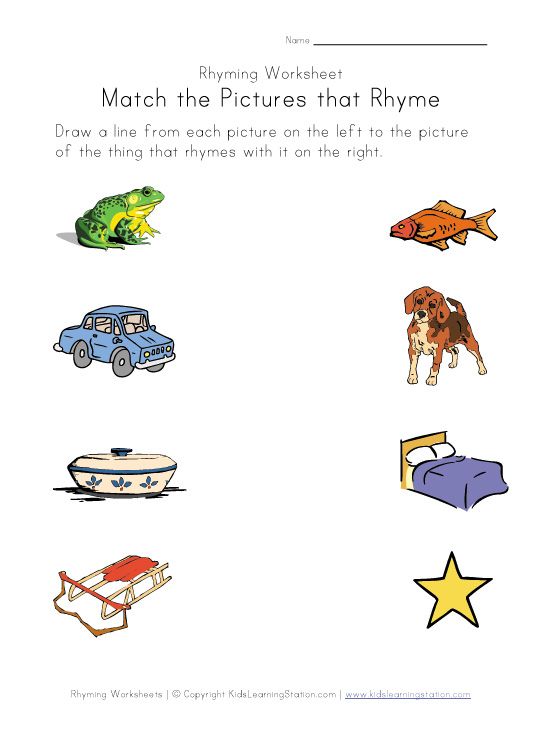
Author
Rhyming Games | Classroom Strategies
Rhyme is found in poetry, songs, and many children's books and games. Most children also love to sing and recite nursery rhymes. Words that can be grouped together by a common sound, for example the "-at" family — cat, hat, and sat — can be used to teach children about similar spellings. Children can use these rhyme families when learning to read and spell.
| How to use: | Individually | With small groups | Whole class setting |
Why teach about rhyming?
Developing a child's phonological awareness is an important part of developing a reader. Young children's ability to identify rhyme units is an important component of phonological awareness. Research shows that students benefit from direct instruction on rhyme recognition paired with fun activities that target this skill.
In this skill tutorial video from Heggerty, the instructor discusses and models rhyme repetition, rhyme recognition, and rhyme production.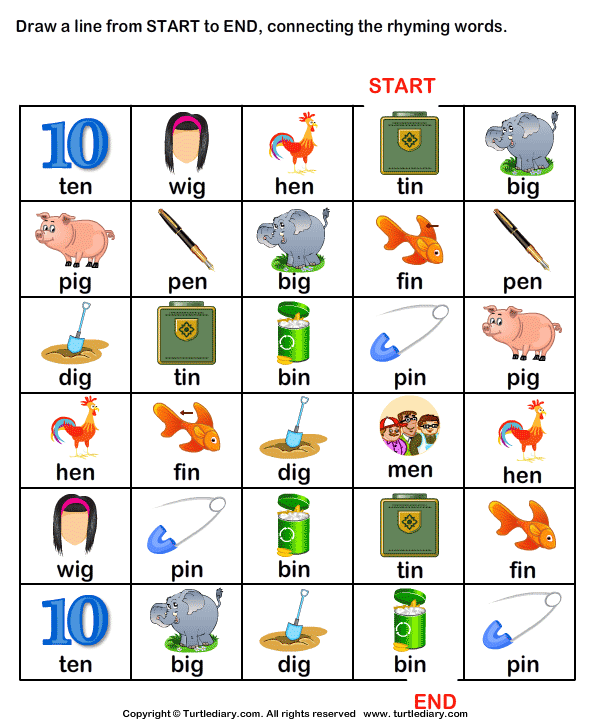 (Heggerty)
(Heggerty)
What rhymes with this picture? (whole class)
Students decide if their objects rhyme with a picture, and then compare written rhyming words. (Balanced Literacy Diet)
Match the rhyming objects (small group)
In small groups, students match images of objects that rhyme to develop phonological awareness. (Balanced Literacy Diet)
Collect resources
Rhyme book
Students can draw pictures of objects that rhyme or cut out rhyming pictures found in magazines and place them in their books.
Rhyming activities
This PDF includes objectives, directions, and materials for nine different rhyming activities developed by the Florida Center for Reading Research.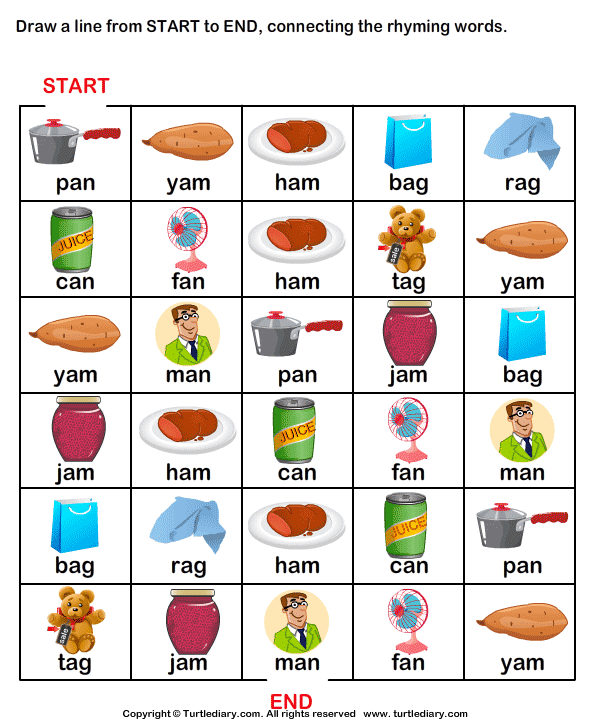
Rhyming activities ›
Rhyming words: body parts game
Learn how to play this simple rhyming game, where kids think of words that rhyme with different body parts such as "head" or "eye."
Rhyming body parts game ›
Space-themed rhymes
The file folder game found on the link below helps students match rhyming words. Teachers can download and print the game, including all materials and instructions.
Space-themed rhyming game ›
Word family chart
This Reading Rockets article describes several ideas for rhyme games and classroom activities. One example provided is how to create a word family chart from various rhyming words. Teachers can use rhyming words from a story or nursery rhyme to pull words for the chart.
How Now Brown Cow: Phoneme Awareness Activities ›
Differentiate instruction
for Second Language Learners, students of varying reading skill, and for younger learners
- Use pictures instead of words in activities for younger and lower level readers
- Include oral rhyming activities.
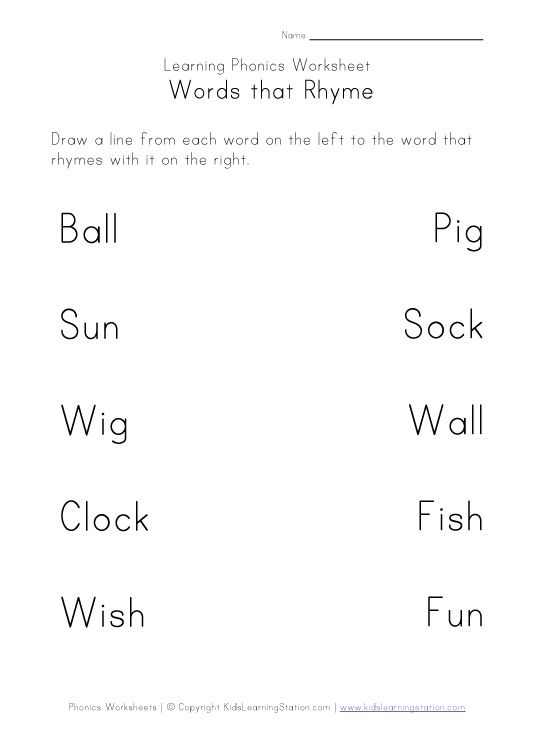
- Include a writing activity for more advance learners.
- Use blank diagrams for more advance learners to complete (see example here).
See the research that supports this strategy
Bradley, L., & Bryant, P. (1985). Rhyme and reason in reading and spelling. Ann Arbor, MI: University of Michigan Press.
Bryant, P., MacLean, M., & Bradley, L. (1990). Rhyme, language, and children's reading. Applied Psycholinguistics, 11, 237-252.
Moats, L. & Tolman, C. (2008). The Development of Phonological Skills.
Snow, C., Burns, M., & Griffin, P. (Eds.). (1998). Preventing reading difficulties in young children. Washington, DC: National Academy Press.
Children's books to use with this strategy
Sheep in a Jeep
By: Nancy Shaw
Genre: Fiction
Age Level: 3-6
Reading Level: Beginning Reader
Silly rhymes about silly activities make the words jump off the page, complemented by humorous illustrations.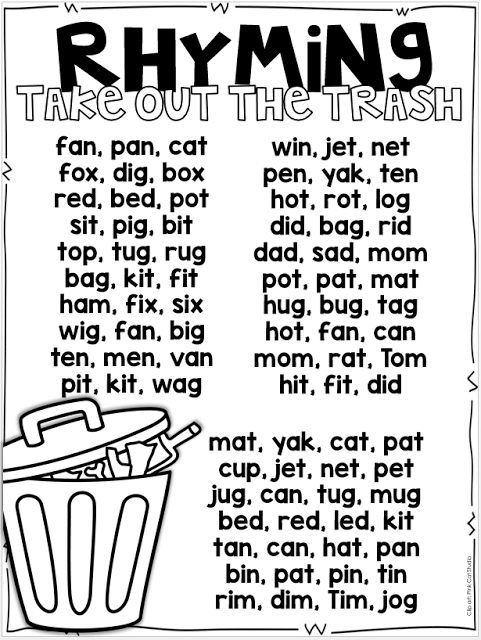
Jamberry
By: Bruce Degen
Genre: Fiction
Age Level: 6-9
Reading Level: Independent Reader
Jaunty rhymes (that just may be 'sing-able') are likely to lead to wordplay (literally) as one follows the animal cast play with berries of all kinds.
Giraffes Can't Dance
By: Giles Andreae
Genre: Fiction
Age Level: 3-6
Reading Level: Beginning Reader
Gerald, the giraffe, is told by the other jungle animals that he can't dance. Of course, they're proven wrong as Gerald does his thing in this rhyming tale. This book may also inspire alliterative use of language.
I Can’t Said the Ant
By: Matthew Polly
Genre: Fiction
Age Level: 3-6
Reading Level: Beginning Reader
An improbable cumulative tale with lots of interesting rhymes that uses illustrations as clues for meaning.
Hamsters, Shells, and Spelling Bees: School Poems
By: Lee Bennett Hopkins
Genre: Poetry
Age Level: 3-6
Reading Level: Beginning Reader
Familiar subjects are presented in short poems by a range of writers. These easier-to read works are just right to encourage careful listening.
These easier-to read works are just right to encourage careful listening.
Llama Llama Red Pajama
By: Anna Dewdney
Genre: Fiction
Age Level: 0-3
Reading Level: Pre-Reader
Even the bedtime rituals don’t subdue the dramatic baby llama and the nighttime fears that descend when Mama Llama leaves his room. Young readers (and their parents) will see their own behavior in the rhyming text and expressive and winning illustrations.
Comments
Game rhymes
Sergeeva T.V.
Chain rhyme
GOALS
- Teach children to answer with a word consonant with the one named.
- Learn to feel the rhythm, rhyme.
Teacher
Guys, let's play soon.
We will choose different words!
Say any words, okay?
But only such that it turns out ...
(smoothly).
What words similar in sound can be found for the word bird?
Children. Titmouse, small, singer.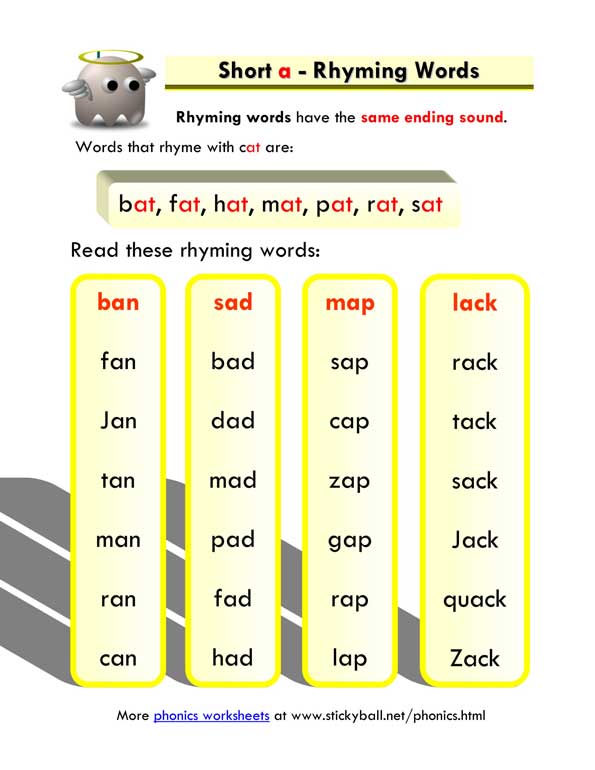
Teacher. Speaking of bunny?
Children. Know-it-all, dunno, runaway, jumper, runaway.
Teacher. Speaking of cat?
Children. Spoon, bowl, basket, accordion, midge, potato, window, leg, earring, matryoshka.
Teacher. Speaking of mouse?
Children. A bump, a puff, a puff.
Teacher. Speaking of cancer?
Children. Poppy, tank, varnish, like.
Variant
The teacher throws the ball and pronounces a word, the one who catches the ball answers with a word consonant with the name. nine0009 Stove - sheep, river.
Birdie - titmouse.
Magpie - white-sided.
Bunny - runaway.
Find a pair
GOALS
- To teach children to match words that are similar and different in sound-rhythmic structure.
- Develop visual memory.
Teacher. Connect the words of the two columns so that you get a rhyme.
Edge Grass
Firewood Scallop
Herringbone Hut
Cockerel Needle
White-sided Fox
Bunny Cornflower
Magpie Sister
Titmouse Flower
Cowardly Bird
Variant
Picture words can be suggested.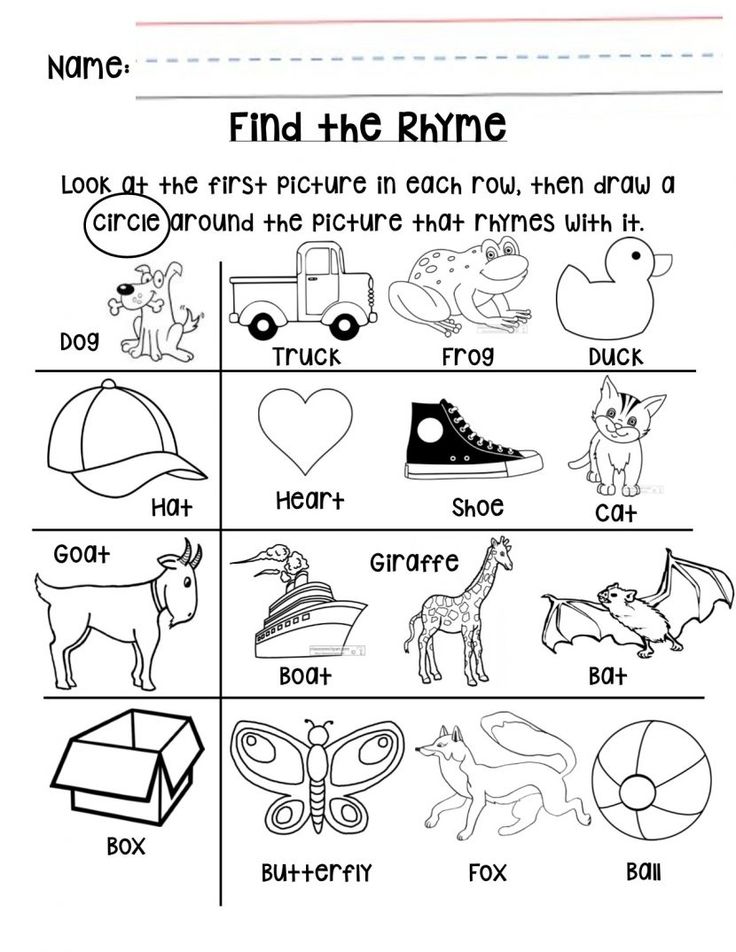 Children find a picture that is similar in sound-rhythmic structure.
Children find a picture that is similar in sound-rhythmic structure.
Game with pictures
OBJECTIVES
- Teach children to choose a rhyme for the word - the name of the picture.
- Develop language flair.
First you need to prepare cards with pictures from which you can make rhyming words, for example, a picture of a pipe, another picture of a sponge. All pictures are located on a large table or on a carpet on the floor. Children distribute them in rhymes. For example, near the picture of a river there is a picture of a stove, a donkey is a goat, a cat is a spoon, a watering can is a snake, etc. nine0009 Options
1. One child takes a picture, the other finds a picture with a rhyming word. Both say their words out loud. The group repeats.
2. Place pictures face down. Open one picture and say the corresponding word out loud. Whoever can name the rhyming word gets a picture and can open the next one.
3. One picture is opened. All children draw an object called a rhyming word. Here the solution is represented by a figure.
Here the solution is represented by a figure.
Say a word
OBJECTIVES
- Teach children to write their own rhyming lines.
Teacher. You already know how to pick up rhyming words. Today we will try to make suggestions.
Where were you, squirrel, walking?
Children
I collected nuts.
Teacher
The squirrel jumped fast,
Children
Lost all the nuts.
Teacher
Whom did you find, hedgehog?
Children
I brought a squirrel to you.
Teacher
Yesterday we played in the forest,
Children
We saw a huge mushroom. nine0009 Teacher
A fungus stood aside,
Children
The hedgehog couldn't find it.
Teacher
Like a little hedgehog
Children
Shoes have become torn.
Teacher
And our squirrel
Children
Clean plates.
We are poets
OBJECTIVES
- To teach children to compose quatrains that contain a whole story.
Teacher
The teacher says to Paraska:
“What fairy tales have you read?”
Paraska thinks, "Oh,
I haven't read any!" nine0009 And behind someone whispers:
"Turnip!"
Paraska yelled: "Cap!"
Today we will also come up with funny poems. What or who do you want to write about?
What or who do you want to write about?
Children answer.
Let's talk about the cat, let's support Serezha. I will write down what you tell me, and then I will read out what we have done.
Children come up with unexpected situations with a cat by rhyming words.
Children. The cat sat on the window. The cat saw a midge. The cat took a basket and went for potatoes. The cat sat on the window and dangled its legs. The cat put all the spoons in a basket. nine0009 Council. The most important thing is not to leave the words of children without attention. And for each word come up with a rhyme.
Stories to rhyme
OBJECTIVES
• Teach children to write simple rhymes.
• Learn to distinguish between the sound and semantic sides of speech.
Teacher. Do you already know what rhyme is in poetry?
For example, the rhyme for the word flower can be a leaf, and for the word porridge - curdled milk. Bear cub Misha wants to teach you how to do it. They drew funny pictures with Druzhok and came up with inscriptions in verse for them. And the last word in the second line of each rhyme was not completed. Find the right rhyme yourself. It's not difficult at all. nine0009 A friend is behind the fence and looks timidly,
How cleverly a friend is wielding ... (with chalk).
Druzhka is disturbed by one thought
Will they see ... (elephant).
When Mishka gets tired of playing
Let him stand at the gate ...
(mouse).
All morning they searched and searched until
Found a new bowl...
(Druzhka).
Help Dunno compose poetry
OBJECTIVES
• To teach children to distinguish between sound and semantic aspects of speech.
The teacher brings N. Nosov's book "Adventure Dunno".
Teacher. Guys, did you recognize this book? Today I will tell you how Dunno wrote poetry. nine0009 ... After Dunno did not turn into an artist, he decided to become a poet and compose poetry ... Dunno came to the poet Tsvetik and said:
- Listen, Tsvetik, teach me to compose poetry. I also want to be a poet.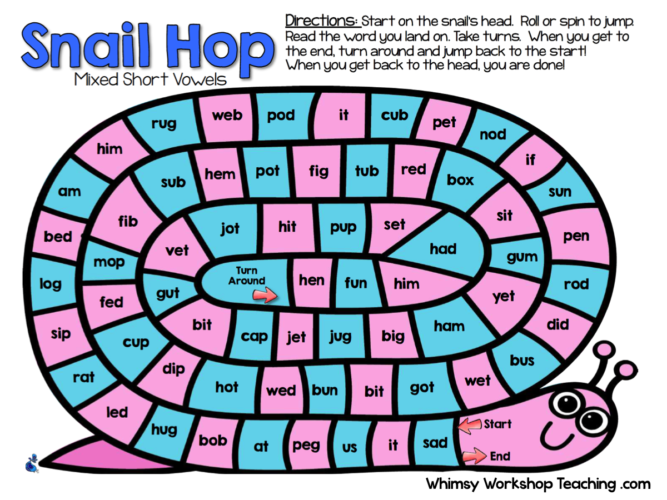
- Do you know what a rhyme is?
- Rhyme? No, I do not know.
- Rhyme is when two words end in the same way, - explained Tsvetik. - For example: a duck is a joke, a shortbread is a walrus. Understood?
- Understood.
- Well, say a rhyme for the word "stick".
- Herring, - Dunno answered. nine0009 Guys, help Dunno.
Game in progress.
All day long Dunno wrote poetry and finally came up with:
Znayka went for a walk to the river,
Jumped over the sheep.
Hurry was hungry -
Swallowed a cold iron.
Under Avoska's pillow
There is a sweet cheesecake.
Find rhymes
OBJECTIVES
- Teach children to identify rhyming words from a text by comparing them.
Teacher. Today I will read B. Shergin's story "Rhymes" to you, and your task is to hear rhyming words. Do you agree? nine0009 Shish went to the city on his business. It was summer, it was hot.
An uncle rides a horse ahead. Shish and asked him to give a lift. He sat down next to his uncle. But Shish cannot sit silently. He is only silent when he sleeps. He says:
- Uncle, let's play rhymes.
- What is it - rhymes?
- And let's say it so that it was smooth.
- Come on.
- Here, uncle, what was your father's name?
- My dad's name was Kuzma.
Shish says:
I'll take your Kuzma
by the beard! nine0009 - Why are you going to take my dad by the beard?
Shish says:
- This, uncle, is for rhyme. Tell me what your grandfather's name was.
- My grandfather's name was Ivan.
Shish says:
Your grandfather Ivan
Put the cat in his pocket.
The cat is crying and sobbing,
Your grandfather is scolding.
The uncle got excited:
- Why would my grandfather put a cat in his pocket? Why are you picking up such rubbish?
- This is an uncle, for rhyme.
- I'll tell you a rhyme, what's your name? nine0009 - My name is… Fedya.
Uncle says:
If you are Fedya,
Then catch a bear in the forest.
Ride a bear,
Get off my horse!
- Uncle, I was joking. My name is not Fedya, but Stepan.
Uncle says:
If you are Stepan,
Get on the eroplane,
On the eroplane and fly,
Get off my horse!
- Uncle, I was joking. My name is not Stepan, but… Silantiy.
Uncle says:
If you're Silantius,
Then get off my horse.
- What are you, uncle, there is no such word - “tears”. nine0009 - Although not, get off anyway!
Shisha had to get off the cart. It serves him right. If a kind person carries you on a horse, you sit silently, and do not invent all sorts of trifles.
Children find rhyming words in the text and name them.
How to learn a text?
Today's children are faced with the task of learning texts from the school curriculum or retelling the contents of a textbook every day. At the same time, the volume of the load sometimes does not even allow you to prepare in advance. Unfortunately, it is almost impossible to learn any text in a minute, but there are many auxiliary techniques that allow the child and his parents to spend a minimum of effort and get an excellent result. In this article from iSmart, you will learn how to quickly memorize the text given at school. nine0007
Scientists have found that memorizing a text without understanding its meaning leads to the fact that an hour after memorization a person remembers only 60% of the information. After a week, only 20% of the mechanically mastered material remains in the head. Thus, in order to use long-term memory, you need to pay attention to meaningful work with text.
An example of a memory study image
The choice of a specific method of memorization depends on the psychological characteristics of the student and his type of perception of information, less often - on the type of text and its volume. So there are mechanical, mnemonic, rational techniques, etc. It is easier for someone to perceive the text by ear, and someone remembers the images. If the child is kinesthetic, it is better for him to rewrite texts. Finally, children who love logic and orderliness perceive tables, blocks, etc. more easily. And the sooner parents understand how a child learns information, the easier it will be to choose an effective technique for him. nine0007
more easily. And the sooner parents understand how a child learns information, the easier it will be to choose an effective technique for him. nine0007
An example of an image with memory typology
How to learn a verse quickly?
To memorize a poem, first of all, you need to understand it. Poems often contain words unfamiliar to the student: outdated concepts, scientific terms, rare phraseological units, jargon, neologisms, etc. Parents or teachers should clarify all these things to children.
If a child does not perceive poetry well and, in particular, rhymes, to explain the content, you can shift the poem into a prose text. Mom and dad can prompt the child with leading questions so that he remembers the semantic sequence. Checking whether the poem is clear in the end is simple: just ask what each line says. nine0007
However, understanding the meaning does not always mean feeling the poem. It is important that the student catches the rhythm of the text and the tonality and can correctly place pauses that do not always correspond to punctuation marks in verses.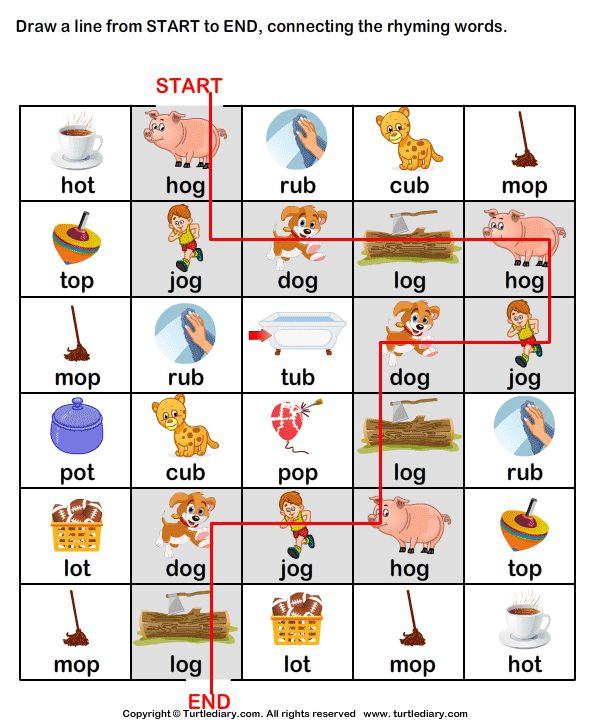 As soon as the child has managed to hone beautiful reading aloud, you can move on to memorization:
As soon as the child has managed to hone beautiful reading aloud, you can move on to memorization:
• Poetry, unlike prose, is rarely illustrated. Therefore, to visualize the text, you can draw pictures on your own or with your parents. Pictures can be schematic and reflect either the meaning as a whole or each stanza. Also, when memorizing small verses, mnemonic tables help - diagrams in which illustrations reflect each word or expression. nine0007
An example of an image with a mnemonic table for a poem
• Using the associative method for poems, it is better to choose specific and vivid images that are easy to imagine in your head. You can recall a case from life, a suitable random picture, etc. Sometimes it is possible to tell a whole story with visual images, that is, to make an imaginary clip for a poem. The child can add his own details, for example, changing the appearance of the lyrical hero. The main thing is that in such a fantasy the necessary sequence of poetic events is preserved.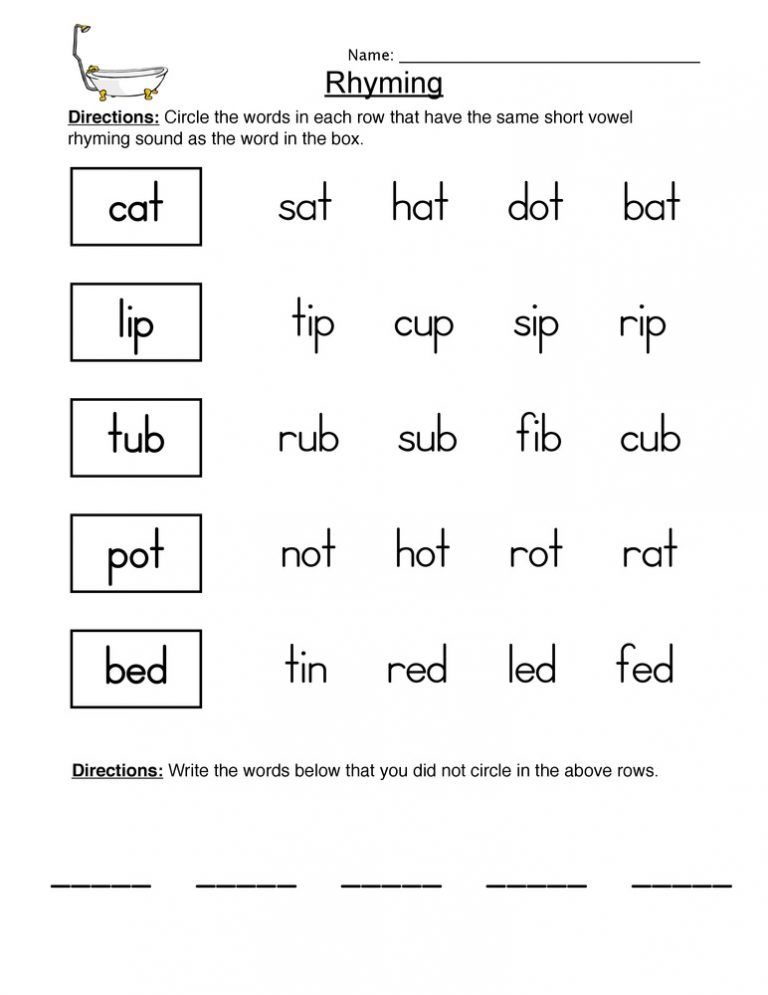 nine0007
nine0007
• So that the student does not confuse the lines in the poem, you can print the text and cut it line by line. Shuffle the papers and ask the child several times to arrange the lines in the correct order.
• When memorizing a poem, some children may benefit from body memory. Especially this method works well on descriptive texts without a specific plot, for example, landscape poems. The essence of the technique is that while reading, you need to use your hands and feet, showing what is happening in the text. nine0007
• The snowball technique of memorizing a verse can be made more tangible if the child is kinesthetic. To do this, you need to take a ball and unwind the threads with the pronunciation of each line. You can try to tell the text even in reverse order to roll up the ball. An alternative option is to touch or string beads while reciting a verse, throw a ball or collect a pyramid. These methods are great for developing fine motor skills.
• When reading a poem for memorization aloud, each time you can bring new intonations into the text.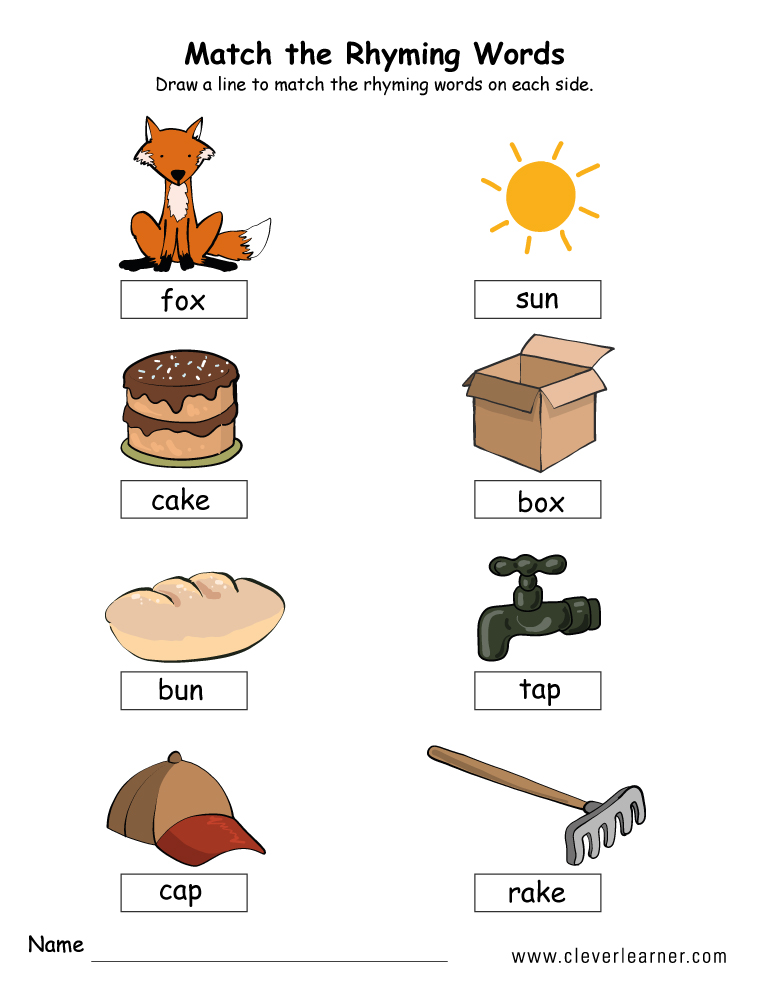 This will allow you to look at the verse in different ways and not get tired. The child can put accents on different words, change the emotional mood. Memorizing verses with expression makes it easier to understand the text. And another plus of the technique is that it develops the skills of artistic reading and acting skills. nine0007
This will allow you to look at the verse in different ways and not get tired. The child can put accents on different words, change the emotional mood. Memorizing verses with expression makes it easier to understand the text. And another plus of the technique is that it develops the skills of artistic reading and acting skills. nine0007
Learning a fable
Memorizing fables, which are most often asked during the transition from primary to secondary school, also has some features. Such texts are usually long and rhyming, so it is difficult to master them the first time. To remember the fable, use the following techniques:
• Highlighting the main idea. Fables are instructive texts, so they always have a moral. To make it easier to remember the work, start by analyzing the plot and go through the text with a pencil. Having understood who the main character is and what the author wanted to say, as well as having examined the illustrations, you can try to compose a free prose presentation. When the essence is clear, it becomes easier to follow the narrative, and therefore learn the text. nine0007
When the essence is clear, it becomes easier to follow the narrative, and therefore learn the text. nine0007
• Learning from stanzas. The fable has a clear rhythm and rhyme, and words that are difficult to understand are rarely found in it. Therefore, the most difficult thing is to remember long lines. It's best to do this gradually, so use the structure of the fable itself and learn it by quatrains or even two adjacent lines. Slowly increase the amount of text on the principle of a snowball, not forgetting to repeat the previously learned piece to reinforce.
• Use of game forms. Treating homework as a game is a great option for teaching younger students. In particular, it is possible to organize a theatrical production on the theme of a fable with the whole family, and then the monologues of the characters will be learned automatically in the process. The main thing is to reduce improvisation in the text to a minimum. nine0007
Memorizing study notes and prose
Written retelling (exposition)
A sure way to remember a text is to rewrite it by hand, saying the phrases out loud.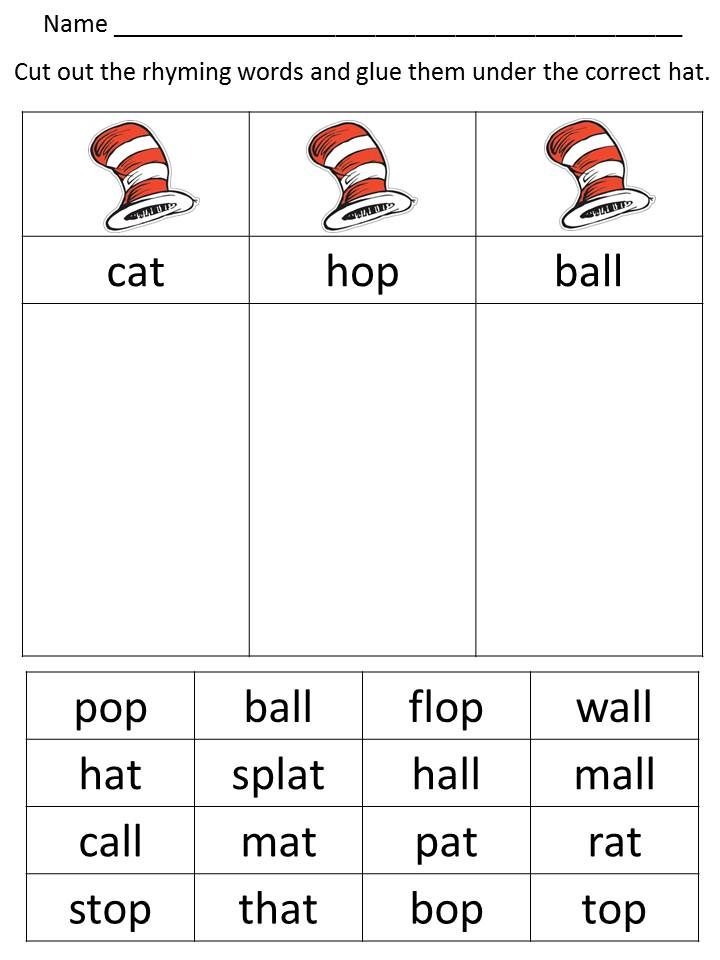 The child can do this only from memory, looking into a book or under the dictation of the parents. Such an exercise will help to master the material and improve fine motor skills, increase literacy. And the presence of a written cheat sheet when answering gives the student psychological confidence.
The child can do this only from memory, looking into a book or under the dictation of the parents. Such an exercise will help to master the material and improve fine motor skills, increase literacy. And the presence of a written cheat sheet when answering gives the student psychological confidence.
• When rewriting a long text, it is better to break it into several fragments. Each part needs to be worked on separately. You can make two written versions at once: with the full text and with key images, ideas, the beginning of each line or paragraph. nine0007
• When transcribing a text by hand for the first time, you can retell it based on the hint and trying to remember the details. The second time you need to not just rewrite the material, but write down what you remember, and then re-read it, comparing it with the source. However, you should not rewrite more than three times per evening, otherwise the text will cause irritation.
• Do you want your brain to work even harder while working on the text? Try copying the material with a different hand.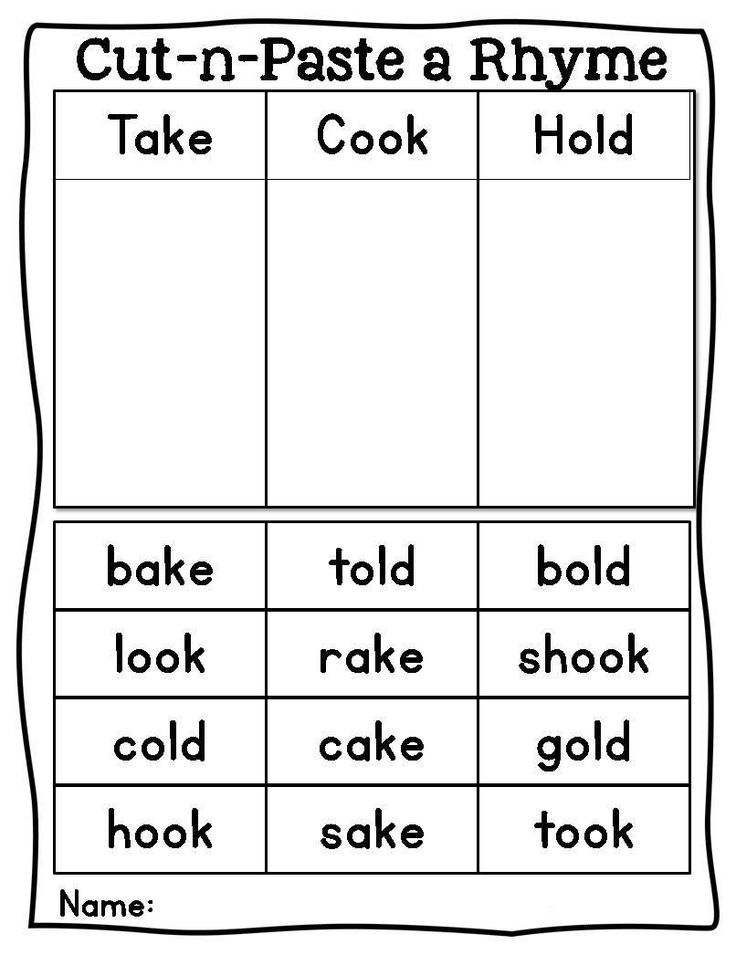 In the process of understanding what is written (and handwriting by different hands, as a rule, differs), the memory itself will prompt the necessary words. nine0007
In the process of understanding what is written (and handwriting by different hands, as a rule, differs), the memory itself will prompt the necessary words. nine0007
Techniques for the development of visual memory are also added to the "mechanical" technique. To do this, you can graphically design the rewritten text. With the help of colored markers, difficult or important words and sentences are highlighted in the text, and then they try to reproduce them separately in writing. And you can also paint over the end of sentences in the finished text with a pen, and then enter the missing words from memory.
Example of an image with graphical text highlighting
Reading the text aloud
• If the child has a good auditory memory, he can record on a voice recorder or smartphone how he reads the text clearly and expressively. If desired, the student's parents can make an entry themselves. It is convenient to listen to such an audio version with headphones at recess, on a walk, on the road and before going to bed.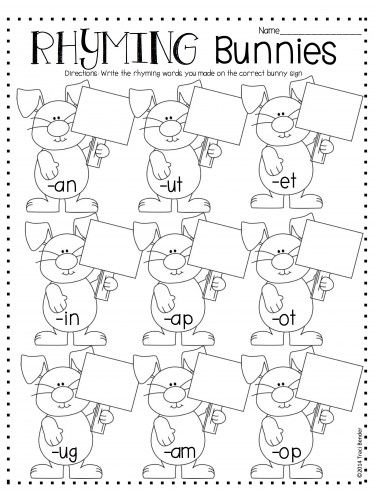 When recording, it is important to observe small pauses and intonation marks. This will allow you to repeat what was said to yourself while listening.
When recording, it is important to observe small pauses and intonation marks. This will allow you to repeat what was said to yourself while listening.
• It is believed that a person better remembers information located at the end and at the beginning of the text (the so-called edge effect). Therefore, it is worth memorizing the most difficult fragments at the beginning of the lesson and at the end. If you retell the material from the textbook, you can change the text in places during the presentation, but without losing the meaning. nine0007
• When learning a lot of similar information (eg formulas), the brain can confuse the material, overlaying memories on top of others. To minimize this phenomenon (interference), you need to study similar things at different times, and preferably also in different rooms.
• To make the text memorize automatically, try reading it in a circle. To do this, having reached the second paragraph, again return to reading the first. Then, combine the first and second paragraph and go back to the beginning. Each time add a small fragment and read again. nine0007
Each time add a small fragment and read again. nine0007
• I'm sure everyone has come across a situation where a song you hear by chance stays in your head all day long. If the piece you want to learn is small, you can use the most creative method and try to turn the lyrics into a song. By singing the lines out loud several times, the child will remember the material in a natural way. The melody can be absolutely anything.
Methods of working with visual memory
Association search
Among the numerous mnemonic devices, one of the most versatile is the technique of associations. You can come up with bright, non-standard or funny images for poorly remembered phrases.
If a literary text is hard to remember, try adding details to the plot. Think over and imagine the appearance of the characters, the manner of their communication, the place of action. Also, the text will become more “alive” if you add sounds and smells to it.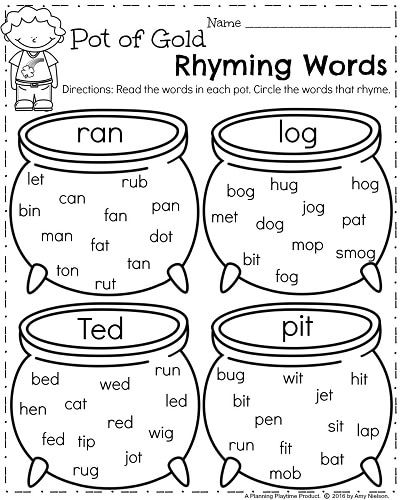 Luckily, children's imaginations tend to be wild, so this shouldn't be a problem. nine0007
Luckily, children's imaginations tend to be wild, so this shouldn't be a problem. nine0007
When a child has learned to quickly select associations that are convenient for him, you can move to a new level and offer to create entire associative series, building connections between images. The end result may be a short story based on imaginary anchor points. Remembering it, it will be easier to retell the original text.
Creating diagrams
How to quickly learn a large text for school if the child likes logical structures and visual materials? Use the diagram. The scheme in this case is a text model that helps to reproduce it from memory. It can be a laconic flowchart or an entire comic. The main thing is that each piece of text corresponds to one of the elements of the scheme. At first, you can retell, peeping into a graphic cheat sheet, and then do without it. For text visualization, not only tables or diagrams are suitable, but also simpler lists. When you arrange the material by numbering each new thought, it becomes easier to remember the information. nine0007
When you arrange the material by numbering each new thought, it becomes easier to remember the information. nine0007
An example of an image with a school diagram
If a child has a developed visual memory, it is easier for him to remember how the text or diagram is located on the page. Additionally, you can use the color scheme to memorize the text. It is enough to make a summary, table or diagram, using a pen or pencil of a specific color for each item. For example, the beginning will be blue, the middle will be black, and the ending will be green. In the process of learning, the brain will remember the color landmarks, and the words themselves will appear before the eyes. nine0007
Illustrating the main ideas
The pictogram method uses both visual memory and associative thinking. The bottom line is that each sentence of the text should be presented as a picture. Drawings do not have to be complex and detailed: it is enough to grasp the meaning of what was said.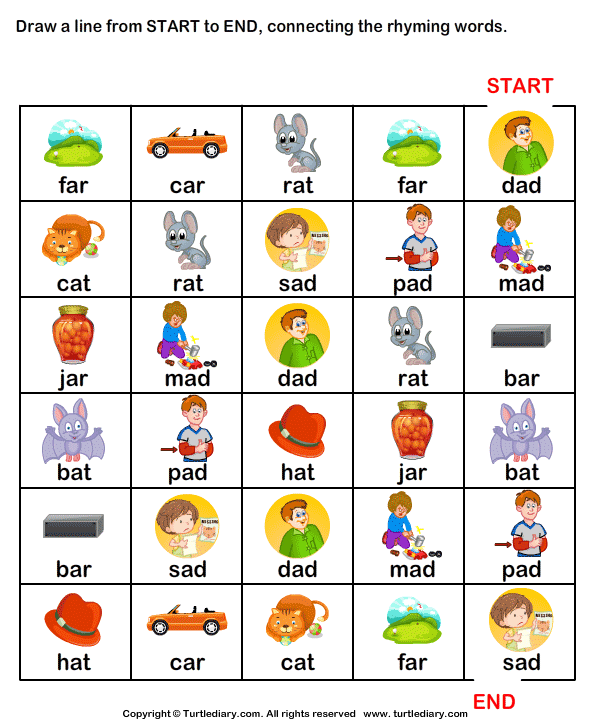 Turning to memorizing the text, arrange the pictures in the desired sequence.
Turning to memorizing the text, arrange the pictures in the desired sequence.
Alternative options for working with the visual type of perception - the creation of an intellect map. In this case, the drawings are not placed in the order of the plot, but are grouped around the main picture, which expresses the main idea. For those who do not like to draw for a long time, but think in pictures, a way to create a visual cheat sheet using emoticons is also suitable. You need to retell the text through emoji, and then remember it according to a figurative story. nine0007
An example of an image of a mind map
Drawing up a plan
To make a plan of the text, you must first clarify all incomprehensible words, and then divide the material into semantic parts. From each fragment, write out brief abstracts. Then you can try to retell the text in 5 minutes using the created cheat sheet.
You can also use the question and answer method to better understand the text.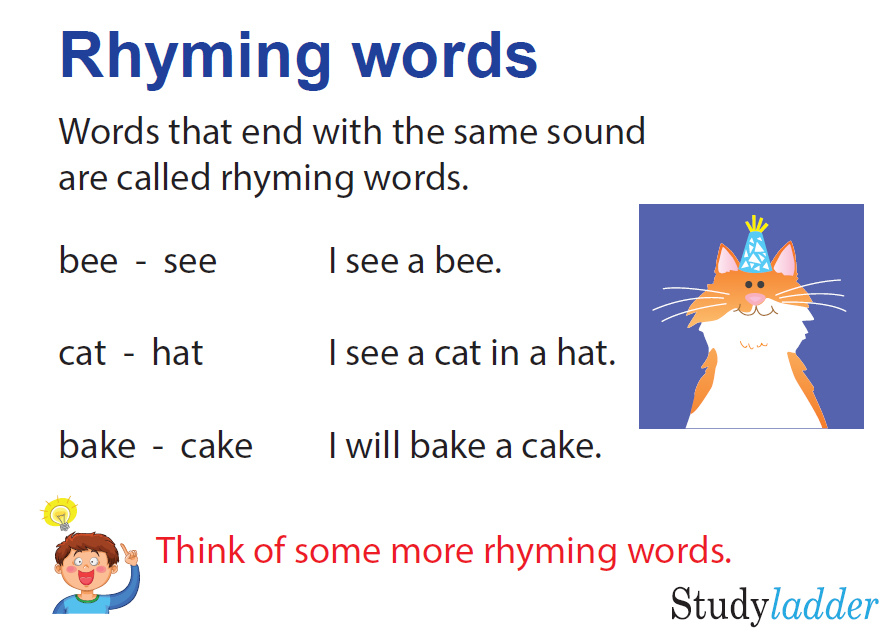 This will help to reveal a prosaic plot or quickly formulate the main idea of a paragraph. Use the following questions to guide your plan:
This will help to reveal a prosaic plot or quickly formulate the main idea of a paragraph. Use the following questions to guide your plan:
• Who is the hero of what is happening?
• What does he do?
• What is the motivation of the actors?
• Where and when does this happen?
Answering these points, the child essentially automatically composes a simplified version of the text. You can also make mnemonic clues, such as existing phrases for remembering the colors of the rainbow or the order of cases. You can come up with and remember an abbreviation that will stand for a specific sentence from the text or as its main ideas. nine0007
An example image with a mnemonic clue
How easy is it to remember a text in a foreign language?
• In the case of learning a foreign language, a situation often arises when one forgotten word leads to a violation of the whole story and stumbles. Therefore, it is useful to pre-select familiar synonyms for new words. Grouping words according to grammatical features also helps. For example, you can separately write out verbs from the text, sorting them by time or endings. nine0007
Grouping words according to grammatical features also helps. For example, you can separately write out verbs from the text, sorting them by time or endings. nine0007
• Use stickers. This visualization method stimulates memory in your spare time. You need to print the text on paper and divide it into numbered parts. Each of the fragments can be glued in different places, whether it be a closet in the hallway or a refrigerator door. This technique is also effective in the case of learning new words for real objects, because stickers can just be placed on things.
An example of an image with stickers
• Some students find it easier to learn a foreign text if the information is structured and links are clearly identified. In this case, it is worth breaking the work into several successive parts and giving each a conditional name. It will also help to highlight the key words in each of the episodes that you need to learn in turn. nine0007
General Tips and Tricks
• Although the inner mind plays a major role in learning texts, do not underestimate the outer environment. To memorize the works, it is important to choose a quiet place where extraneous factors will not be distracting. It is advisable to turn off gadgets for a while or put them on silent mode.
To memorize the works, it is important to choose a quiet place where extraneous factors will not be distracting. It is advisable to turn off gadgets for a while or put them on silent mode.
• It does not hurt to tune in to the task and physically. You can do a little gymnastics that will improve blood circulation by stimulating brain activity. If there are problems with the pronunciation of individual letters or words, do an articulation warm-up. nine0007
• Pay attention to the time of day chosen for memorization. It is believed that the brain is receptive to new information in the morning (7:00 - 11:00), in the afternoon (15:00 - 18:00) and before bed. It makes sense to sit down for the task in the evening, and in the morning - to consolidate what has been mastered. Some are helped by the audio version of the text, turned on by the bed at night. Sometimes daytime sleep after class also comes to the rescue: half an hour of rest in bed can increase memorization efficiency by 2-3 times.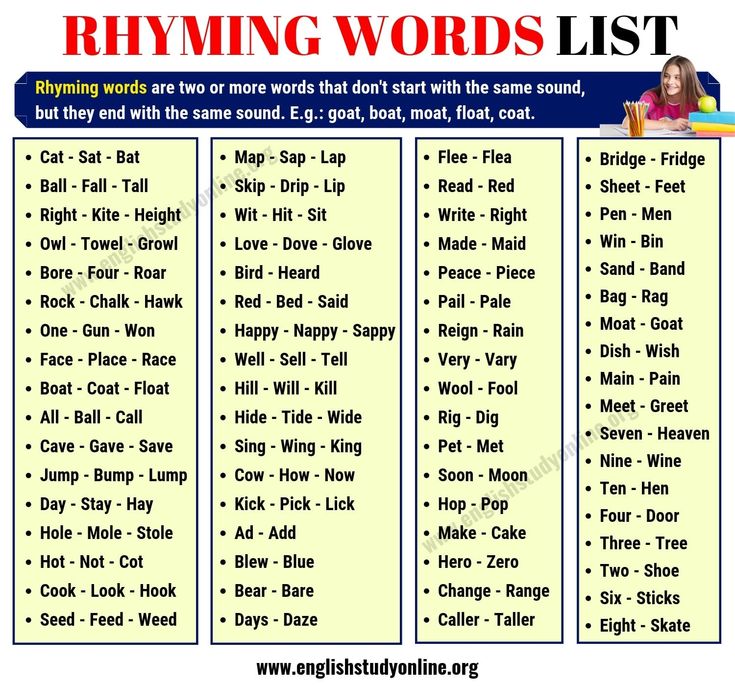
• You can work with texts alone, but it is better if friends or parents act as listeners, having the original in their hands. Then it will be easier to find weak points in the child's performance. If the student is studying on his own, let him introduce an imaginary interlocutor. Such a trick will help subconsciously select simplified formulations, unless, of course, retelling word for word is required. nine0007
• Exercise outdoors or in a ventilated room to stimulate brain activity. In addition, to study the text, one cannot do without a source of natural light. But it is not necessary to memorize the text while sitting in one place. On the contrary, walking increases blood circulation, which means that the brain works faster.
• Rewards are an important part of natural motivation. The reward can be assigned after each stage of any of the methods. For example, after repeating one paragraph of text without errors. Remember that fatigue reduces concentration, so don't be afraid to take breaks.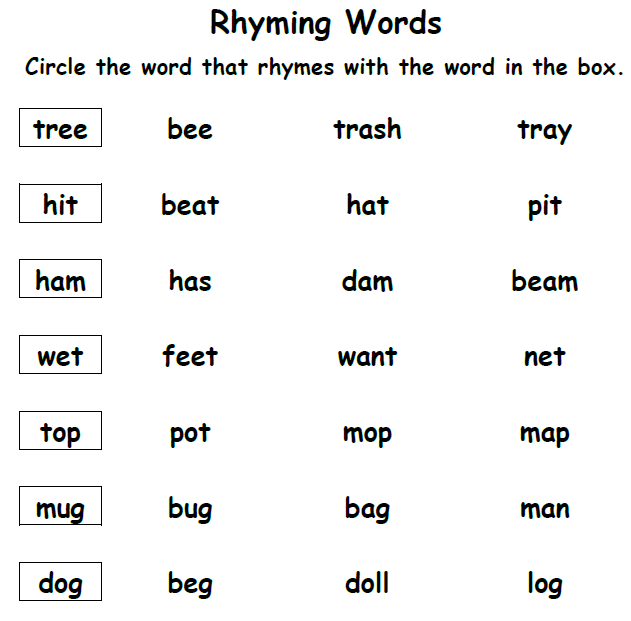 The ideal format is 20 minutes of rest for 40 minutes of practice. nine0007
The ideal format is 20 minutes of rest for 40 minutes of practice. nine0007
• Educators and psychologists recommend reading a text at least three times before retelling, memorizing or writing it down. When the text is already completely learned, it is still worth repeating 2-3 times a day.
• There is a spaced repetition method. In accordance with it, the learned text must be repeated 20 minutes after the lesson. The second repetition falls on 6-8 hours later. You need to fix the material in a day. If you need to memorize a very large amount of information (for example, while preparing for an exam) and at the same time you are not running out of time, interval repetitions should occur on the day of memorization, after three days and after a week. nine0007
• Brain warm-up is an important part of effective memorization of any text. Outside of classes, it is useful to train your memory from time to time to facilitate the further perception of new information. You can memorize routes, phone numbers, dates of birth of loved ones, etc.